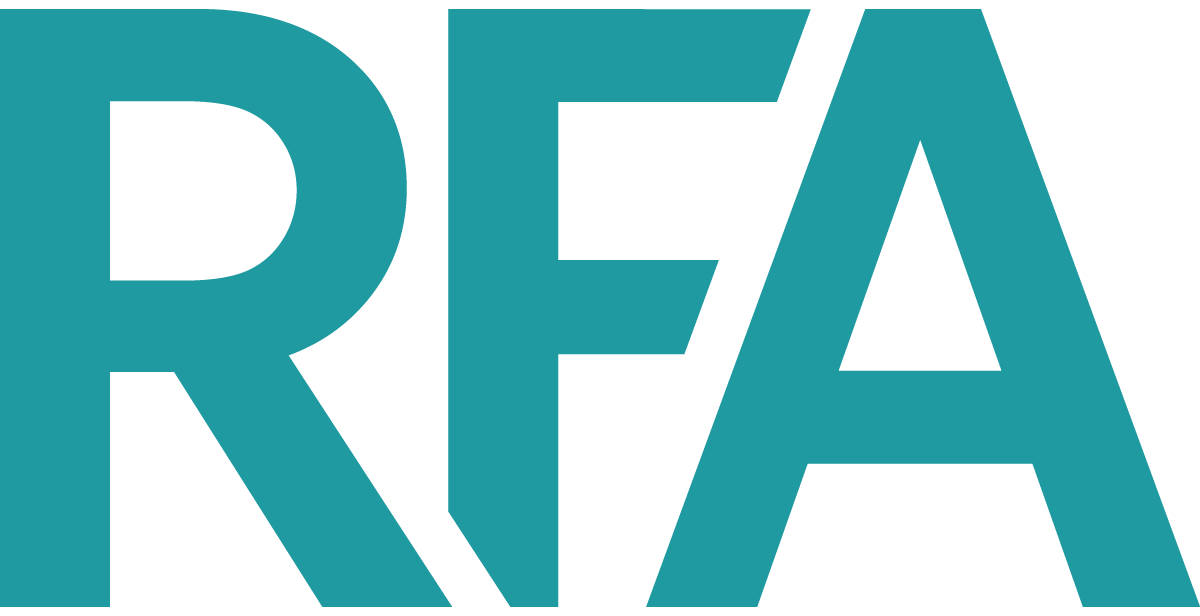Mortgage Resources


Forms
Below are forms you may be required to complete during the mortgage application process.
Authorization to Disclose Information
Glossary
-
Agreement of Purchase and Sale
A legal agreement between a seller and a buyer of a home that offers a certain price for a home. The offer may be firm (no conditions attached), or conditional (certain conditions must be fulfilled before the deal can be closed).Amortization
The number of years it will take to pay off your mortgage. The most common amortization for a new mortgage is 25 years.Appraisal
The process of determining the value of property, usually for lending purposes. This value may or may not be the same as the purchase price of the home.Appraisal Value
An estimate of the market value of the property.Adjustable Rate Mortgage
With an adjustable rate mortgage, your interest rate changes when the lender's Prime Rate changes. The payment amount adjusts automatically to reflect the change in the interest rate. This means your payments may change from payment date to payment date.Annual Percentage Rate
Annual percentage rate (APR) represents the total cost of a loan expressed as an interest rate. It includes all interest and some non-interest charges associated with a mortgage. If there are no non–interest charges, the annual interest rate and APR will be the same.Blended Payments
Payments consisting of both a principal and an interest component, paid on a regular basis (e.g. weekly, biweekly, monthly) during the term of the mortgage. The principal portion of the payment increases, while the interest portion decreases over the term of the mortgage, but the total regular payment usually does not change.Business-for-Self
Term used in reference to borrowers who are self-employed.Basis Point
A basis point, or bp, is a common unit of measure for interest rates / other percentages in finance. The bp is commonly used for calculating changes in interest rates, equity indexes and the yield of a fixed-income security.The relationship between percentage changes and basis points can be summarized as follows: 1% change = 100 basis points, and 0.01% = 1 basis point.Bridge Loan
A bridge loan is a short-term financing tool that helps purchasers to “bridge” the gap between old and new mortgages by allowing them to tap the equity in their current residence as a down payment, while essentially owning two properties concurrently as they wait for the sale of their existing home to close.Closed Mortgage
A closed mortgage is one that cannot be prepaid, renegotiated or refinanced before the end of the term without paying a prepayment charge. However, most closed mortgages contain certain prepayment privileges, such as the right to make a prepayment of 10-20% of the original principal amount each year, without paying a prepayment charge. A closed mortgage often has a lower interest rate than an open mortgage.Closing Costs
Various expenses associated with purchasing a home. These costs can include, but are not limited to, legal/notary fees and disbursements, property land transfer taxes, as well as adjustments for prepaid property taxes or condominium common expenses, if any.Closing Date
The date on which the sale of a property becomes final and the new owner usually takes possession.Debt-Service Ratio
The percentage of the borrower's gross income that will be used for monthly payments of principal, interest, taxes, heating costs and condominium fees. Banks look at this when assessing how much money to loan you.Default/ Loan in Arrears
A) When a borrower or counterparty fails to meet his or her contractual obligations with the Bank. B) The Bank defines a default as failure of a borrower or counterparty to make a scheduled payment of interest and or principal when contractually due.Deposit
A sum of money deposited in trust by the purchaser when making an offer to be held in trust by the vendor's agent, broker, lawyer or notary until the closing of the transaction.Down Payment
A down payment is the amount of money that you put towards the purchase of a home. The down payment is deducted from the purchase price of your home. Your mortgage loan will cover the rest of the price of the home. The minimum amount you'll need for your down payment depends on the purchase price of the home you'd like to buy.Equity
The interest of the owner in a property over and above all claims against the property. It is usually the difference between the market value of the property and any outstanding encumbrances.Equity Takeout
Equity Takeout' Taking money out of a property to use for a variety of purposes. Equity takeout allows homeowners to tap into the equity of their home.Fixed-Rate Mortgage
With a fixed interest rate mortgage, your interest rate does not fluctuate during the mortgage term. Your regular mortgage payment amount does not change. You know exactly what your regular payments will be and how much of the principal balance will be paid off during the term.Gross Debt Service (GDS) Ratio
The percentage of gross income required to cover monthly payments associated with housing costs. Most lenders recommend that the GDS ratio be no more than 32% of your gross (before tax) monthly income.Gross Household income
Gross household income is the total salary, wages, commissions and other assured income, before deductions, by all household members who are co-applicants for the mortgage.High Ratio Mortgage
A mortgage where the borrower’s down payment will be under 20% of the home’s purchase price; will require mortgage loan insurance.Insured Mortgage
Includes all residential mortgage loans insured either under the National Housing Act or by other insurance companies/agencies. This Includes both portfolio insured and individually insured mortgage loans.Interest Rate Differential Amount (IRD)
An IRD Amount is a prepayment charge that may apply if you pay off your mortgage principal prior to the maturity date or pay the mortgage principal down beyond the prepayment privilege amount. The IRD amount is equivalent to the difference between your annual interest rate and the posted interest rate on a mortgage that is closest to the remainder of the term less any rate discount you received, multiplied by the amount being prepaid, and multiplied by the time that is remaining on the term.Loan-to-Value Ratio (LTV)
The loan-to-value ratio (LTV ratio) is a lending risk assessment ratio that financial institutions and others lenders examine before approving a mortgage. Typically, assessments with high LTV ratios are generally seen as higher risk and, therefore, if the mortgage is approved, the loan generally costs the borrower more to borrow. Additionally, a loan with a high LTV ratio may require the borrower to purchase mortgage insurance to offset the risk to the lender. For example, a borrower taking on a $92,500 mortgage to purchase a home appraised at $100,000 would have an LTV ratio of 92.50% (92,500/100,000).Long-Term Mortgage
A long-term mortgage is generally between three and five years or longer. A long-term mortgage generally offers a higher interest rate than that of a shorter-term mortgage. When rates are reasonably low and you do not anticipate making any changes to your mortgage for a few years, choosing a longer-term mortgage secures the interest rate for a longer period of time and makes budgeting easier.Low Ratio Mortgage
Low Ratio Mortgage (Conventional) represents a mortgage where the loan to value at time of origination was less than or equal to 80%.Maturity Date
Last day of the term of the mortgage agreement.Mortgage Loan Insurance
Mortgage loan insurance is typically required by lenders when homebuyers make a down payment of less than 20% of the purchase price. Mortgage loan insurance helps protect lenders against mortgage default, and enables consumers to purchase homes with a minimum down payment of 5% — with interest rates comparable to those with a 20% down payment. To obtain mortgage loan insurance, lenders pay an insurance premium. Typically, your lender will pass this cost on to you. The premium payable is based on a percentage of the home’s purchase price that is financed by a mortgage. The premium can be paid in a single lump sum or it can be added to your mortgage and included in your monthly payments.The Canadian Bank Act prohibits most federally regulated lending institutions from providing mortgages without mortgage loan insurance for amounts that exceed 80% of the value of the home or purchases with less than 20% down payment.
Mortgagee and Mortgagor
The lender is the mortgagee and the borrower is the mortgagor.Mortgage Porting1) Port with the same customer but different property: a straight mortgage port with no change in principal is to be considered a collateral substitution and is not to be reported as a new mortgage lending. However, the porting of a mortgage that is accompanied with an increased principal amount is to be considered a form of refinancing and the entire amount is to be reported as such.
2) Port with the same property but different customers: if there is no change in principal amount the mortgage is to be considered the same mortgage; however, if there is an increase in principal amount the port is to be considered a form of refinancing and the entire amount is to be reported as such (also see Porting)
Mortgage RenewalsMortgage renewals are defined as contractual agreements subsequent to the initial mortgage that maintain or shorten the amortization period and do not increase the principal amount (irrespective whether done at term expiration or prior to it, i.e. as full prepayment).
Mortgage TermThe number of years or months over which you pay a specified interest rate. Terms usually range from six months to 10 years.
Notice of AssessmentThe Notice of Assessment (NOA) is the form that the Canada Revenue Agency (CRA) issues to all Canadian taxpayers after processing their tax returns. This CRA tax assessment summarizes the results and states the amount of taxes to be paid or refunded. Information regarding Registered Retirement Savings Plan contributions for the tax year, including any unused contributions, are also included. The NOA is often used to verify a self-employed borrower’s tax status. A borrower may access a lost or misplaced NOA online via the CRA’s My Account service or by request to the CRA.
Open MortgageAn open mortgage can be prepaid, in part or in full, during the term of the mortgage without paying a prepayment charge. The interest rate on an open mortgage is often higher than the interest rate on a closed mortgage. An open mortgage can provide flexibility until you are ready to lock into a closed term.
Payment FrequencyThe choice of making regular mortgage payments every week, every other week, twice a month or monthly.
Payout (Discharge) StatementA payout/discharge statement is provided by a lender to the borrower and sets out how much must be paid to discharge the mortgage. The payout amount differs from the mortgage balance as it includes the mortgage interest owed through the anticipated payout date, and may include any missed payments or applicable fees. The payout/discharge statement is required before a home sale or mortgage refinance.
PenaltyThe amount of money charged for prepaying all, or some, of your mortgage.
PortingThis allows you to move to another property without having to lose your existing interest rate. You can keep your existing mortgage balance, term and interest rate plus save money by avoiding early discharge penalties.
Posted RateThe interest rate advertised or shown by a lender as the interest rate it charges for a mortgage product. A borrower may be able to negotiate with the lender for a lower interest rate.
Pre-Approved Mortgage CertificateA letter from a lender stating that you are pre-approved for a mortgage on certain terms. The pre-approval certificate will also list requirements that you must satisfy to obtain final approval for the mortgage.
Pre-PaymentEarly repayment of all or part of a mortgage. When a closed mortgage is prepaid, the lender may charge a prepayment charge.
Prepayment ChargeCompensation when the borrower prepays all or part of a closed mortgage more quickly than is allowed as set out in the mortgage agreement.
Prepayment OptionThe ability to prepay all or a portion of the principal balance. Prepayment charges may be incurred on the exercise of prepayment options.
Prime Rate (or Prime Interest Rate)The prime rate is the interest rate that a lender publicly announces as its reference rate for certain variable interest rate loans. The prime rate can change at any time.
PrincipalThe amount of money borrowed for a new mortgage.
Principal, Interest and Taxes PaymentTogether, these make up the regular payment on a mortgage if you elect to include property taxes in your mortgage payments
RefinancingRenegotiating your existing mortgage agreement. May include increasing the principal or paying out the mortgage in full.
RefinanceMortgage refinancing is defined as a contractual agreement subsequent to the initial mortgage that does not qualify as a renewal using the above definition.
RenewalAt the end of a mortgage term, the mortgage may "roll over" on new terms and conditions acceptable to both the lender and the borrower. This is known as renewing a mortgage. Otherwise, the lender is entitled to be repaid in full. In this case, the borrower may seek alternative financing.
Short-Term-MortgageA short-term mortgage is generally less than two years. A short-term mortgage generally offers a lower interest rate than a longer-term mortgage. When current rates are high and you think rates may drop, choosing a short-term mortgage allows you to lock in for a shorter period. A short-term mortgage may also be a good option if you plan to sell your home or pay off the mortgage early.
TermThe length of time your mortgage agreement is valid, anywhere from 6 months to 10 years. After that term, you renegotiate your mortgage – or pay it off in full if you can!
Total Debt Service RatioThe percentage of gross income needed to cover monthly payments for housing and all other debts and financing obligations. The total should generally not exceed 40% of gross monthly income.
Variable Rate MortgageWith a variable rate mortgage, the interest rate changes when a lender’s Prime Rate changes. Depending on your mortgage agreement, your regular mortgage payment will either change or remain constant. If your regular mortgage payment amount remains constant, when the lender’s Prime Rate decreases, the amount of interest you pay will also decrease. This means a smaller portion of your regular mortgage payment will be applied to pay interest, and a larger portion will be applied to pay down the principal amount of your mortgage. When the lender’s Prime Rate increases, a larger portion of your regular mortgage payment will be applied to pay interest, and a smaller portion will be applied to pay down the principal amount of your mortgage. If your agreement states that your payment amount adjusts automatically to reflect the change in the interest rate, this means your payments will change from payment date to payment date if the lender’s Prime Rate changes.
Helpful Links
-
Canada Mortgage and Housing Corporation (CMHC)
For the past 65 years, CMHC has has helped millions of Canadians meet their housing needs. Visit CMHC for additional resources and information.Canada Guaranty
Canada Guaranty has a wide selection of mortgage insurance products to meet your needs. Visit Canada Guaranty to learn more.Sagen
Sagen provides mortgage default insurance, making homeownership more accessible to Canadians. Learn more and access a variety of resources by visiting Sagen.Mortgage Professionals Canada
Mortgage Professionals Canada (MPC) is the country's national mortgage broker industry association. To learn more about working with a mortgage broker, visit MPC.Canada Deposit Insurance Corporation
The Canada Deposit Insurance Corporation (CDIC) is a federal Crown corporation created in 1967 to protect your deposits in member financial institutions. Learn more here.Financial Consumer Agency of Canada
The Financial Consumer Agency of Canada (FCAC) is an independent body working to protect and inform consumers of financial products and services. The FCAC provides a Financial Literacy Database as a resource to Canadians. Click here to learn more.Canadian Bankers AssociationThe Canadian Bankers Association provides governments and others with a centralized contact to all banks on matters relating to banking in Canada. Click here to learn more.
Back to Top

